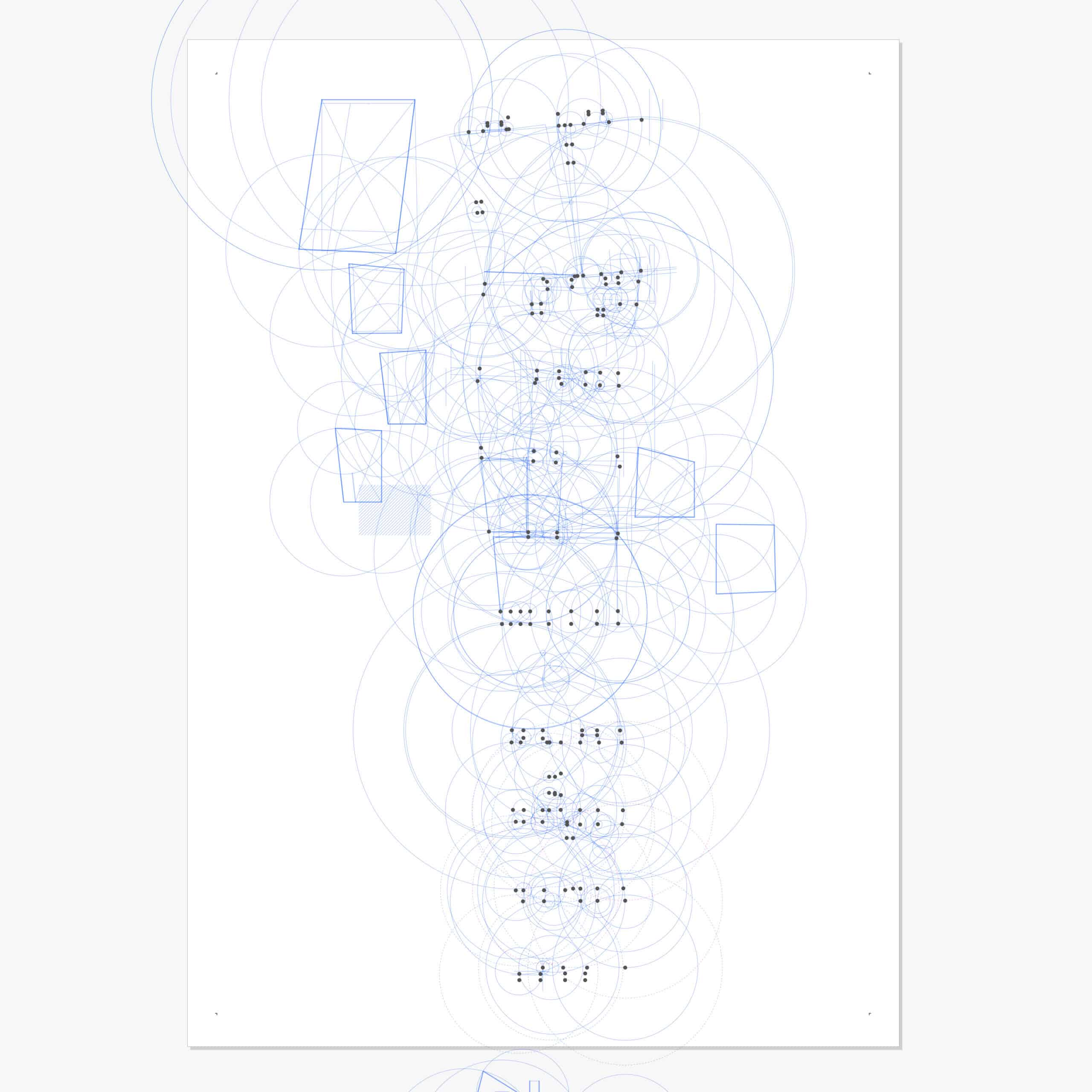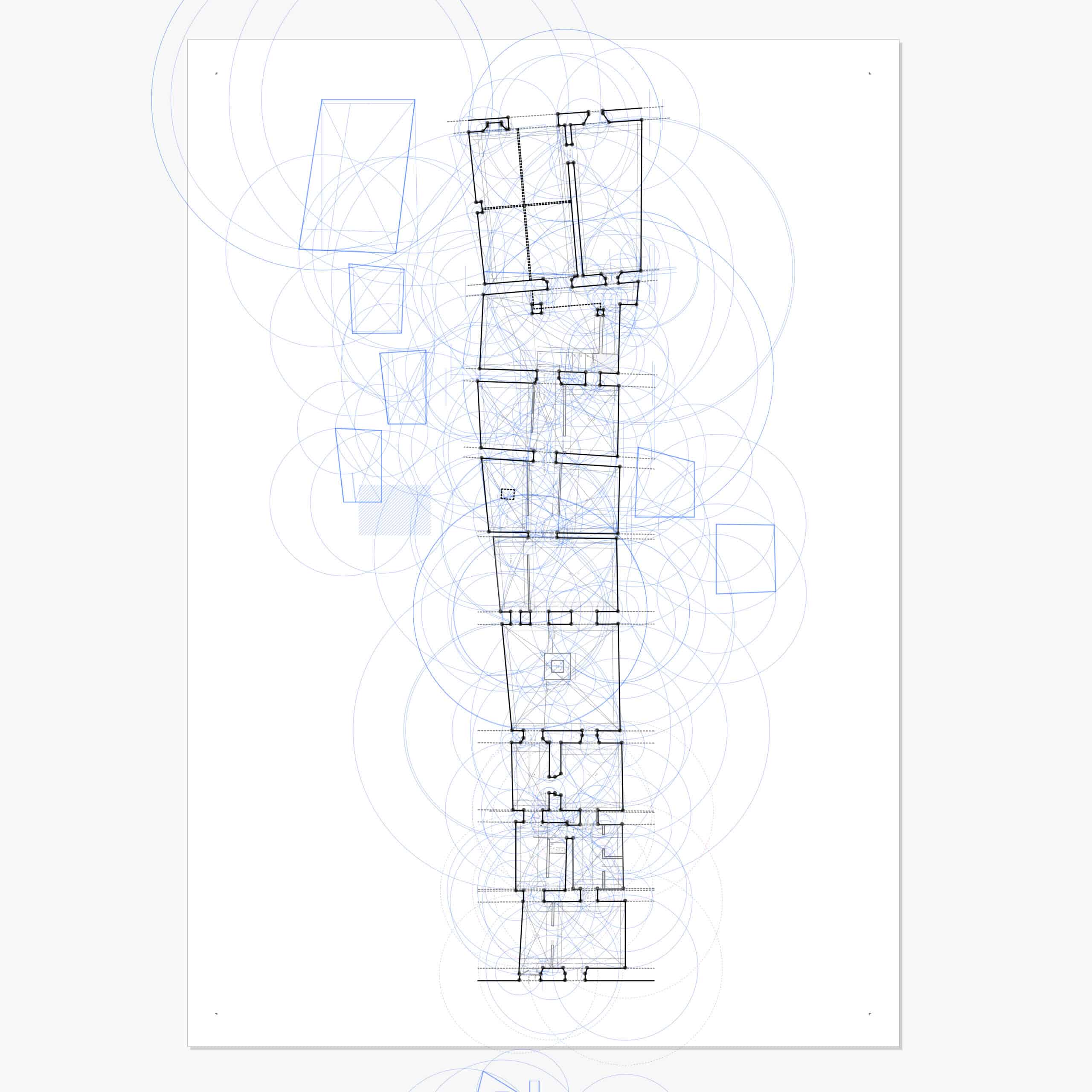To Assist

Computer Assisted Drawings (CAD) have existed since the mid-60s. A young Ivan Sutherland received a doctorate at MIT introducing Sketchpad, a device that by the means of an optical pen allowed the direct edition of graphical objects. Around the 35th century BC, someone was writing the first hieroglyph text over papyrus on the river bank of the Nile. Both, whether in the little square screen or in the sandy colour prints, used a shared tool: auxiliary lines.
Drawings assisted by auxiliary lines have existed forever. These lines are in charge of helping the principals of the drawing, as they hold and harbour the protagonist. And although they may adopt different forms and values, all of them share the desire for discretion, quietly staying put in the background. But anyone who has drawn by hand will know that these lines are not harmless, they leave signs, marks on the paper or even wrinkles. They are discreet but visible. Therefore, with a leap in development separating hand drawings from computer ones, auxiliary lines became hidden, confusing their desire for discretion with their burial.

The first image shows the auxiliary lines necessary to draw a rural house from the 19th century. The house of my mother. People who have lived in an old house will know the grief caused by a bed or a wardrobe that does not fit the angle formed by its walls. Like that, our lives ambushed by geometry. To draw such a house, these shy auxiliary circles become very important as they allow us to triangulate the space, understand these precise angles and find those points that are our protagonists.
Expressing the hidden helps to understand. And by understanding we start to value.

Ruben Casqero is an architect based in Barcelona.
This text was entered into the 2020 Drawing Matter Writing Prize. Click here to read the winning texts and more writing that was particularly enjoyed by the prize judges.
